History of our School
Before the advent of the National Schools in Ireland (1831) almost all pupils in the fee-paying Hedge and Classical Schools were boys. When Fr. John O’Sullivan was appointed Parish Priest of Kenmare in 1839 he immediately set out about building eleven schools throughout the parish.
It was on the advice of Bishop Moriarty, who had visited the Poor Clare School in Newry and been duly impressed, that Fr. John invited the Sisters to come to Kenmare. So, in October 1861, Mother Michael O’Hagan left Newry with six volunteers to establish a school in the “far off wilds of Kerry”.
When they arrived on 24th October neither school nor convent were ready. They moved into “Rose Cottage” and set up a “Breakfast Kitchen” in an old coach house. The records tell us that 150 children enjoyed hop porridge for breakfast and a yeast bun at lunchtime. This tradition survived, in the form of hot cocoa for all who wished to avail of it, right up until the closure of the old building in 1983. Classes were held in a disused brewery until the school was ready for occupation. As the numbers soared to 577 children an extension was added in 1870. Fortunately, the community also grew in number, and in a short time ten Sisters were certified to fill the ten positions in the School which became a Classified School in 1874. Seven other Sisters helped with music, art, leatherwork etc. In 1889 a Kindergarten was built and thanks to generous benefactors it was equipped for Montessori education. The first floor was used for the Lace-making students. At this stage the number on Roll had reached 700; some of the older students came from Bonane, Glengarriff, Kilgavan, Sneem and even Cahirdaniel. Monitresses were trained as well as Governesses. Boys attended until they had received First Holy Communion but senior boys returned for art, woodwork, astronomy and physics. Fr. John himself taught some of the latter subjects.
In 1949 a “Secondary Top” was established for the girls who had done the Primary Cert. This was later upgraded to a Secondary School proper. Initially this catered for girls but it became co-educational in 1967. It was replaced with Pobal Scoil Inbhear Scéine in 2003.
It was in the late sixties too, that the Boys’ N.S. was short of numbers to retail its quota of teachers. In October 1968 the last class of little boys moved across the school yard to attend a branch of the Boys’ N.S. in a building that had once been the Convent Cow house. This solid slate-roofed structure was in use until the new schools, St. Francis’ and St. Clare’s were build in the Convent “Big Field” in 1983.
When the Sisters first arrived in Kenmare I very much doubt that they could possibly have envisaged the vast changes that have taken place over the past 150 years. They set for themselves the task of providing the best education they were capable of for the young people of the area. That they did this has been well documented by Inspectors’ Reports as well as by the testimonial letters of people like Lord Landsdowne and C.S. Hall who were frequent visitors and generous supporters of the school.
And so to 2012 which brought yet another expansion of horizon with the amalgamation of St. Francis’ and St. Clare’s Schools into the newly constructed St. John’s National School.
The history of St. John in Kenmare goes back to the 15th Century.
When Carew’s map of Glanerought was published I 1600A.D. it included a chapel in Killowen. The 1600A.D. church dedicated to St. John (The Baptist) gives its name to the townland i.e. Cill Eoin (Baiste) Killowen. The chapel was on the eastern side of the boundary of the land of Shelbourne House not to be confused with Church of Ireland church ruin and graveyard site at Killowen Heights.
The chapel of Naomh Eoin Baiste was replaced by one built (at the left hand side of the entrance to the Park Hotel, off Shelbourne Street) in 1799, continuing with the name St. John.
In it was a very tall statue of John the Baptist – a copy of the master-piece sculpted by Michael Angelo.
The devotion to St. John the Baptist was not forgotten in the new church of the Holy Cross which was built in the early 1860’s and which included two stained – glass windows – one shows the Baptism of Jesus by John; the other the beheading of John the Baptist.
These windows are at the east end of the church.
John the Baptist is also represented in one of the three lancet sections of the right transect of the church.
In many ways the presence of the church of St. John in Kenmare since the 15th Century gives us a valid reason to name our school St. Johns.
With the name St. John we are also commemorating Fr. John O’Sullivan who was indeed the forefather of education in Kenmare and it is therefore fitting that his Christian name should be used in our school title.
)
